Before the buzzing fluorescent lights of hospitals, the sterile tang of antibacterial soap, and the nice quality toilet paper of modern times, there existed a world where hygiene was an art form, practiced in harmony with the rhythm of nature itself. It was a world where the Native Americans, innovated with resources around them to achieve cleanliness and health..and some of these practices will surprise you. Unravel with us the stunning tapestry of their rituals and methods, an extraordinary testament to human resilience and wisdom. Here, we delve into the untold story of Native American hygiene, a fascinating saga of sustainability, innovation, and profound respect for the environment.
Knight Code: The Code of Chivalry – 7 Rules to Be Unbreakable
These are the greatest quotes and oaths from The Knight's Code of Chivalry. The Code was a moral system that called for all knights to protect others who cannot protect themselves. All knights needed to refine their strength and knowledge to fight wars in the Middle Ages.
Workers In Jerusalem Found Hidden Steps Behind A Sewage Pipe – And They Rewrite The City’s History
In the Silwan neighborhood of Jerusalem’s Old City, there’s a problem: a sewer pipe has burst. And as the issue naturally needs to be sorted out as quickly as possible, workers ultimately come in to mend the faulty line. But the laborers are not alone. This ancient district is so steeped in history, you see, that a team of archaeologists decide to come along for the ride. Then, as they dig, the workers uncover a flight of steps. And it’s just as well that the archeologists are present, as the stunning find is hugely significant. In fact, it may just prove the truth of a story contained in the Bible.
The Most Sadistic Torture Devices in Medieval Europe
We delve into the dark and gruesome world of medieval torture methods. From the notorious rack to the lesser-known Judas Cradle, we explore the instruments and techniques used to inflict pain and suffering on prisoners in order to extract confessions or information. We also examine the societal and political factors that led to the rise of torture during the Middle Ages. Join us as we uncover the disturbing truths about this dark chapter in human history.
Meydan Kalesi | Giant Polygonal and Cyclopean Walls in Turkey
Along the south coast of Turkey in Mersin Province, several massive megalithic sites with polygonal and cyclopean walls exist, hidden in the hills and mountains. Remarkably similar to sites in Italy, Greece and even Peru, these structures are thought to be Hellenistic (Seleucid Empire) built around 2300 years ago. The site of Meydan Kalesi (Square Castle) has rock-cut hypogeum features, 3D relief carvings and Tiwanaku-like monolithic doorways, yet it is unclear who may have built the first phase of megalithic construction. Includes exclusive aerial footage.
Creepy Prehistoric Discoveries You Can't Believe Are Real
In the following video we will investigate creepy prehistoric discoveries you can’t believe are real. Watch the video for more and enjoy!
Why is Herodotus called “The Father of History”?
2,500 years ago, the writing of history as we know it didn’t exist. The past was recorded as a list of events, with little explanation for their causes beyond accepting things as the will of the gods. Herodotus wanted a deeper understanding, so he took a new approach: looking at events from both sides to understand the reasons for them. Mark Robinson explains how “history” came into being.
The Art of War by Sun Tzu: Entire Unabridged Audiobook
The Art of War is an ancient guide on military strategy. Written by Sun Tzu a Chinese general and philosopher in the 5th Century B.C. It was created after he helped successfully defend the Chinese province of Wu against the province Chu.
The strategies in this book have been used for hundreds of years in military campaigns, business and sports. It is the ultimate guide on how to defeat an opposing force in whatever form that might take. Contrary to what we might expect, The Art of War actually advises to avoid fighting as much as possible by only striking targets that are weak and using manipulation to subdue the enemy.
Ultimately Sun Tzu teaches us how to have the advantage in conflict giving us the best possible chance of success
When a Lake Exploded, Releasing 1.6 Million Tons of Carbon Dioxide; The Lake Nyos Disaster
In Cameroon, a rare type of natural disaster relating to volcanic activity occurred in the nation of Cameroon. There in 1986, a landslide led to a lake releasing 1.6 million metric tons of carbon dioxide gas which went on to suffocate people and livestock in an up to 15.5 mile or 25 kilometer radius. This video will discuss this disaster, which is known as a limnic eruption, and is sometimes referred to as an "exploding lake", and how it relates to the Oku volcanic field.
12 Most Mysterious Discoveries Scientists Still Can't Explain
Scientists probably aren’t going to enjoy this video. It’s full of the kind of things that cause them sleepless nights. We’re talking unexplained mysteries, problems that can’t be solved, and discoveries that somehow seem out of place. For everybody who isn’t a scientist, though, it’s a fascinating look at puzzles both ancient and modern. Let’s get started!
The Incredible Untouched City Of Hegra Revealed After 2,000 Years
In the following video we will be exploring the untouched City Of Hegra, also known as Mada’in Salih. Enjoy!
Archaeologists in Peru find 3,000-year-old mummy in Lima
Peruvian archaeologists have discovered an approximately 3,000-year-old mummy in Lima, they said on Wednesday (June 14), the latest discovery in the Andean nation dating to pre-Hispanic times.
Students from San Marcos University and researchers initially found remains of the mummy's hair and skull in a cotton bundle during excavation, before uncovering the rest of the mummy.
The mummy was probably from the Manchay culture, which developed in the valleys of Lima between 1500 and 1000 BC, archaeologist Miguel Aguilar said, and was associated with the construction of temples built in a U-shape that pointed toward the sunrise.
The person "had been left or offered (as a sacrifice) during the last phase of the construction of this temple," Aguilar said. "It is approximately 3,000 years old."
Archeologists unearthed other items buried with the body, including corn, coca leaves and seeds, which they believe may have been part of an offering.
3 Australian Creation Myths Explained
As with all human societies, that of the Indigenous Australians is abounding in stories. Stories of how the world came to be the way it is, stories of heroism and perfidy, stories about animals and birds, and stories about love and hate all have parts to play in the wide array of myths, legends, and tales created by Indigenous Australians. Watch the video below to find out more!
Sun Wukong | The Monkey King
Armed with superhuman physicality and powerful magic, the monkey king known as Sun Wukong goes on to create a whirlwind of mayhem, earning him a tumultuous relationship with the gods. Hear the magical tale of a monkey born from stone, who rose up to become a king, would go on to learn the ways of immortality, and battle the hardiest of the immortal world!
Rurikid Dynasty Family Tree | Rurik the Viking to Ivan the Terrible
In the video below we will analyze the Rurikid Dynasty family tree, from Rurik the Viking to Ivan the Terrible. Enjoy!
How Did India Fall to the Europeans? | East vs. West
European colonial history in Asia -- from the British in India to the Dutch in Indonesia -- is often misunderstood. We're (incorrectly) taught that the East India Companies dominated Asia early, giving rise to more direct European control over their newfound colonies.
The truth is much more interesting. In this video, we will focus on India to tell the story of the West vs. the East in the "Age of Discovery."
European dominance of imperial Asia really only began in the mid-1700s, and that too is a poorly explained phenomenon. In reality, the factors giving rise to European dominance were mostly luck-based, and were the inevitable result of late medieval military-social change in Europe: the Military Revolution.
© Cotswold Archaeology
Amazing Discovery: A sizable cemetery of Bronze Age burial mounds was discovered near Stonehenge
BY THE ARCHAEOLOGIST EDITOR GROUP
A large cemetery of Bronze Age burial mounds, estimated to be up to 4,400 years old, has been found by archaeologists in advance of a building project less than 10 miles (16 kilometers) from Stonehenge.
The cemetery is home to more than 20 barrows, or round mounds, that were erected on a chalk slope at Harnham, southwest of Salisbury, England, between 2400 and 1500 B.C.
There is no proof that the cemetery was associated with Stonehenge other than the location's closeness to the well-known structure. Yet the barrows were constructed around the same period as some of the main portions of Stonehenge, claims Cotswold Archaeology, the private company in charge of the excavations.
Stonehenge may have served as a community gathering spot, a calendar, or possibly a burial ground, according to several researchers today.
The size of the newly discovered barrows varies, with the smallest being roughly 33 feet (10 meters) broad and the largest being 165 feet (50 meters). Nonetheless, the majority of the barrows are between 20 and 30 meters (65 and 100 feet) across.
According to Alistair Barclay, an archaeologist with Cotswold Archaeology and the site's post-excavation manager, the barrows at the cemetery are arranged in "pairs or small clusters of six or so."
The archaeologists arrived at the location in 2022, and they have now completely excavated five barrows in two locations. The location of the fifth barrow, which may have been obscured by loose material that washed down from an upland area, was unknown. Four of the barrows had previously been identified.
An oval-shaped ditch that surrounded one of the barrows was later replaced by a virtually circular ditch throughout prehistory. Because a mass grave near its center contained the skeletal remains of adults and children, the barrow may have been constructed before the others during the Neolithic period, which ended around 2400 B.C.
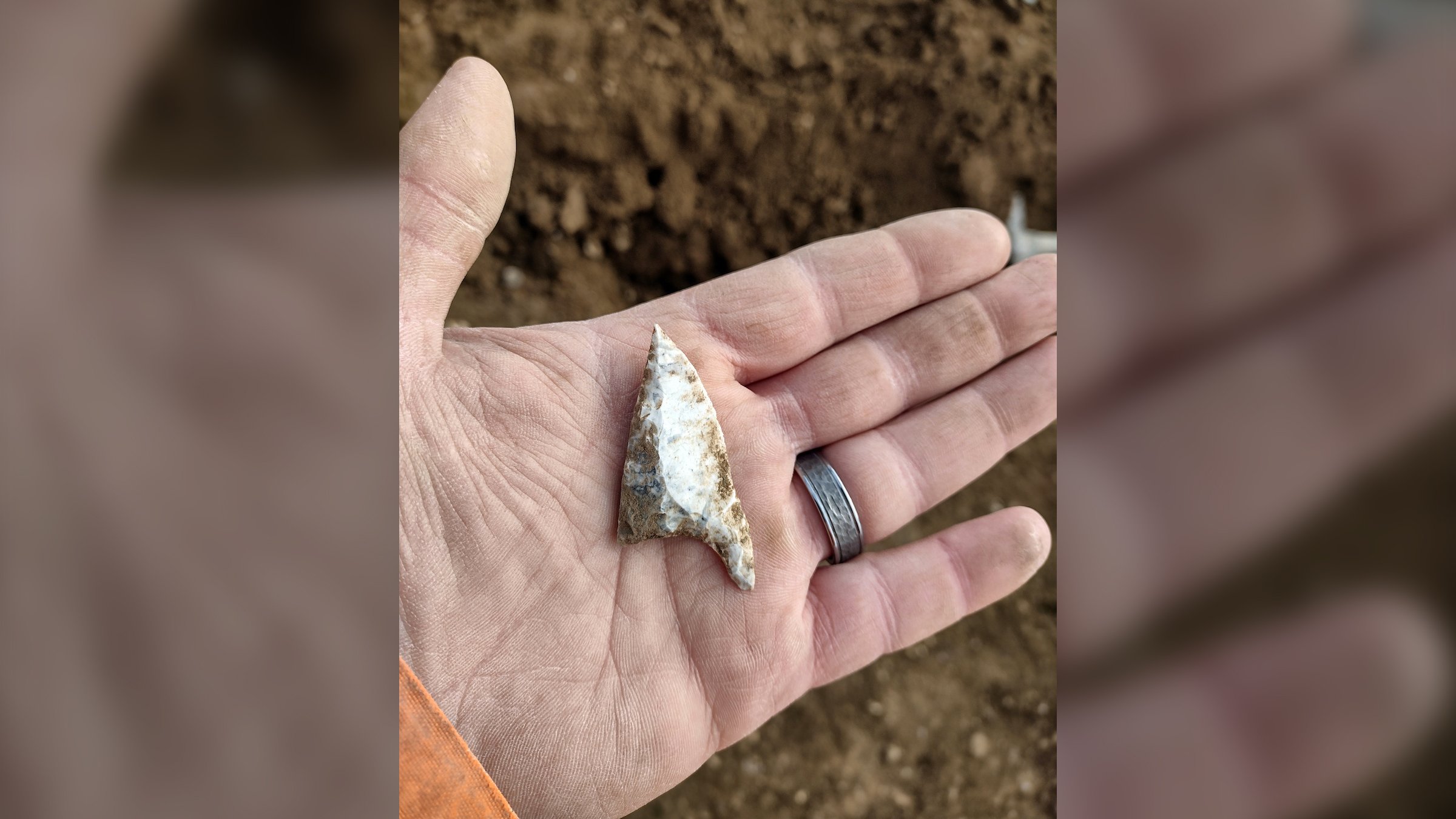
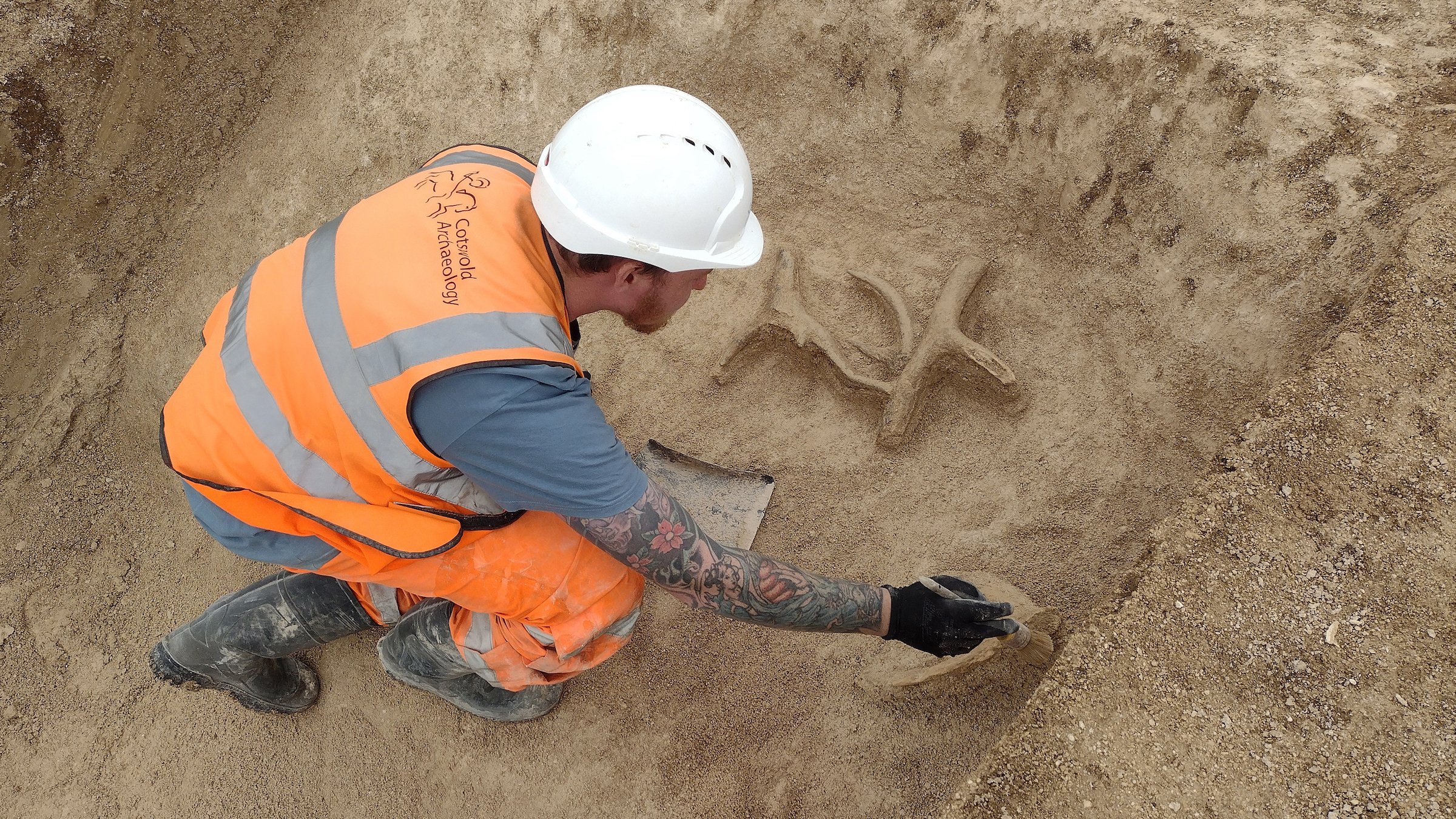
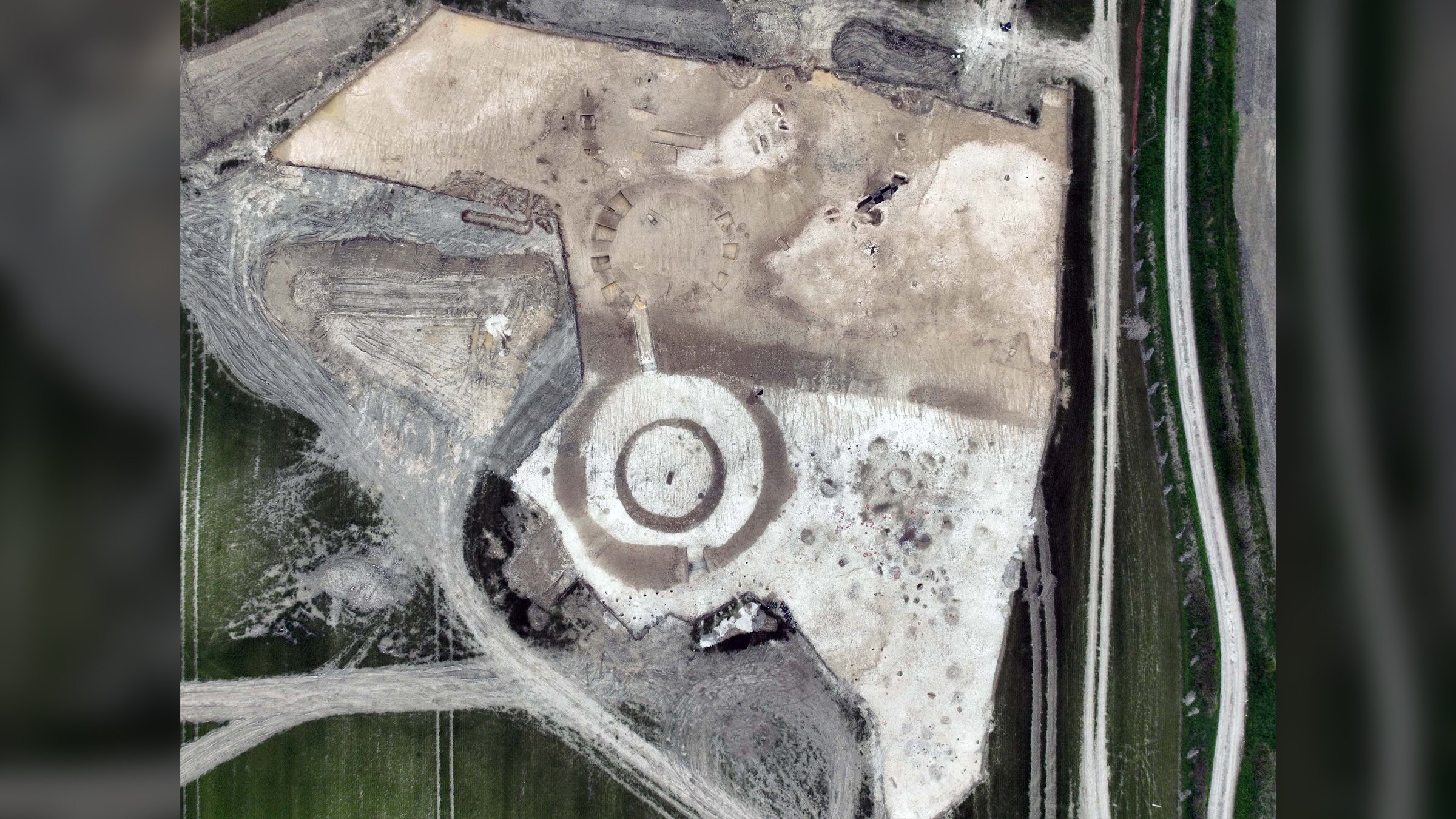
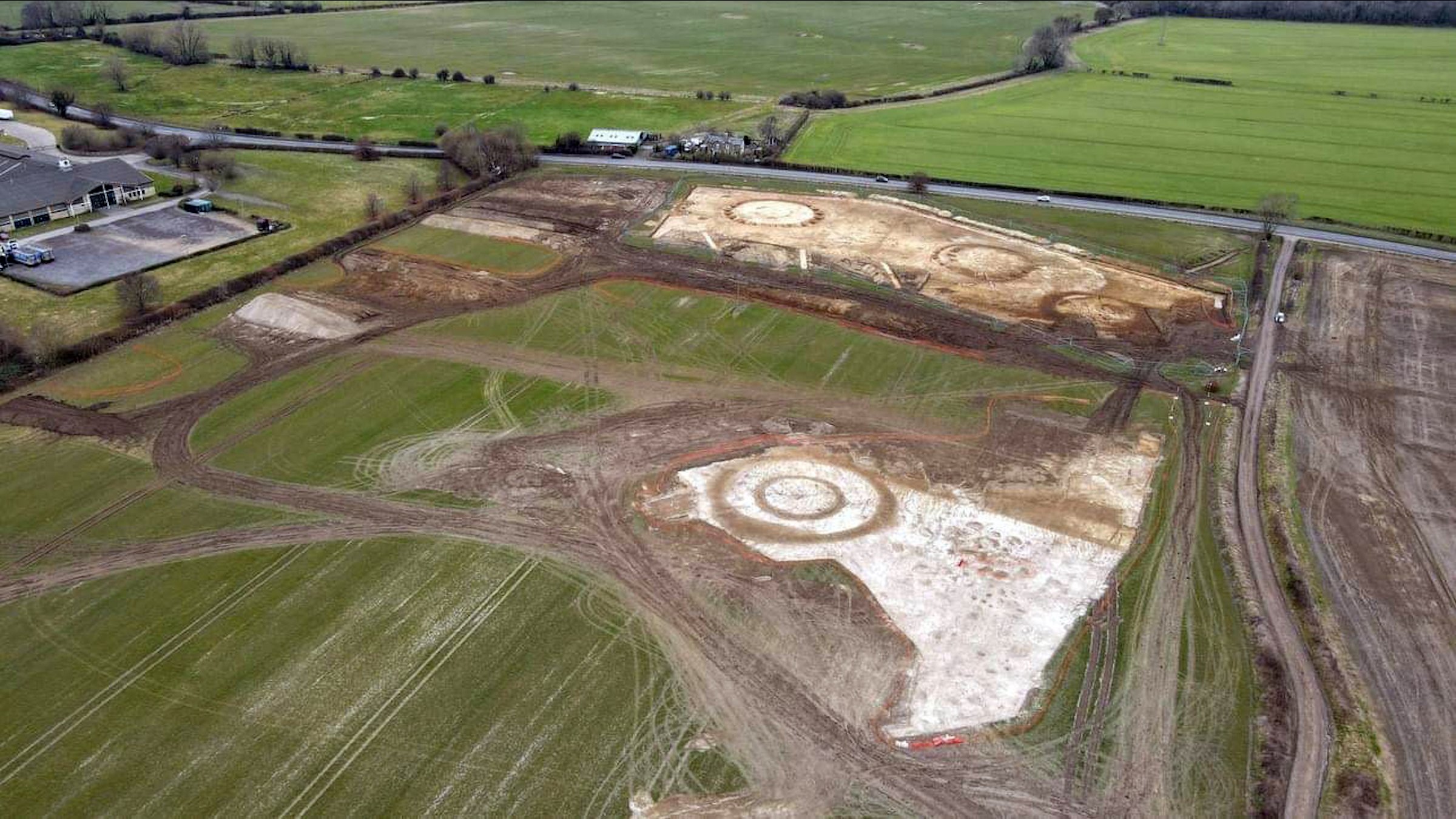
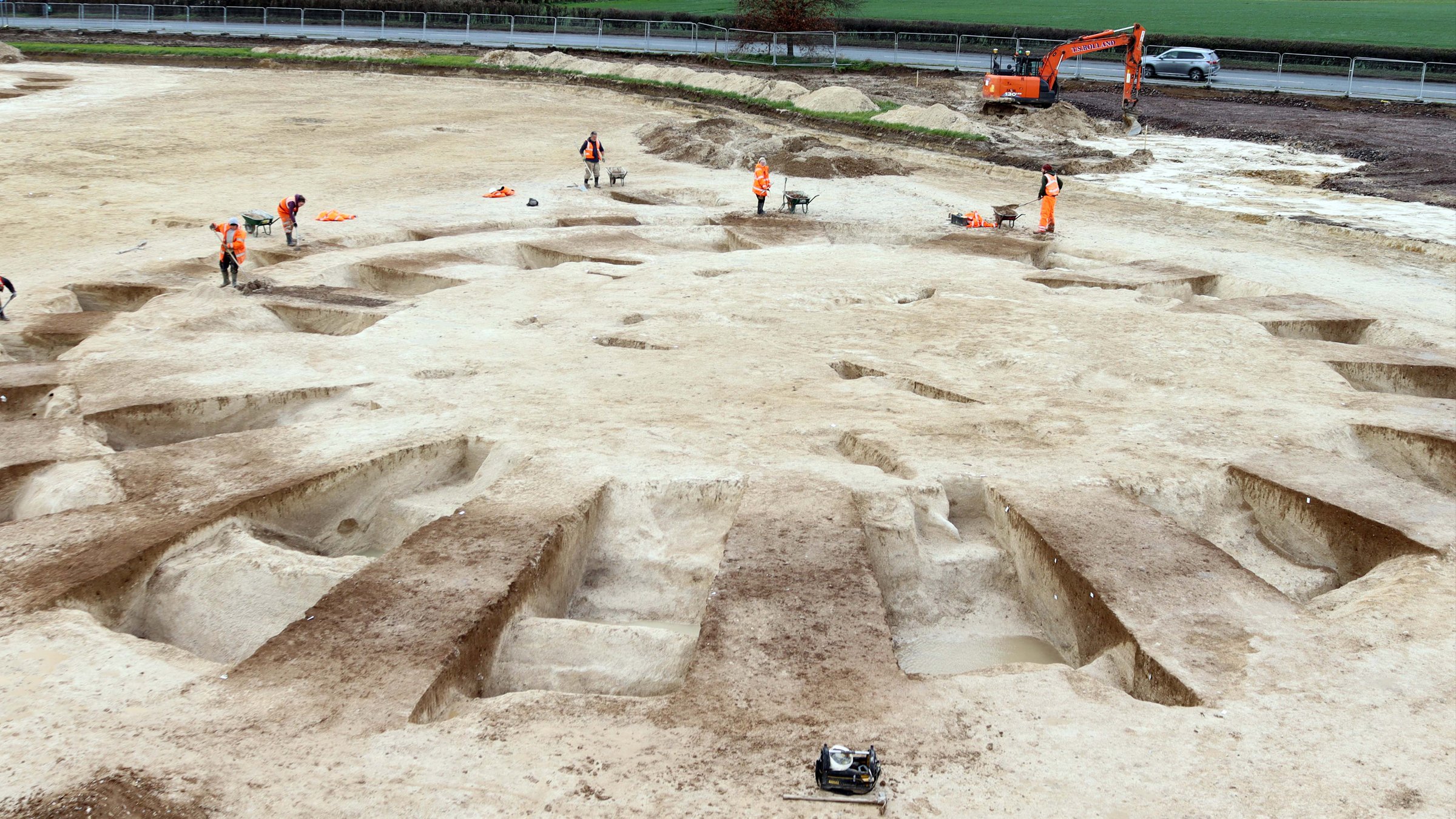
The Neolithic highly valued red deer (Cervus elaphus) antlers, which were used to make tools, ceremonial artifacts, and little things like pins and combs, and the oval ditch also cut through the pits of these antlers.
The antlers will now be examined for indications of intentional damage or wear that would suggest they were originally used to produce tools, according to the statement.
In graves among the barrows, the archaeologists have uncovered the bones of nine additional burials as well as three items. Grave goods like clay "beakers," which are recognizable round drinking vessels, were found in certain graves, showing that the deceased belonged to the Bronze Age "Bell Beaker culture," which expanded throughout Britain after about 2450 B.C.
The site may have had signs of an Iron Age agriculture area, according to the Cotswold Archaeology team, which has also discovered indications of later occupants. There are more than 240 pits and postholes in it. The majority of the pits were used to dispose of trash, which was helpful for archaeologists researching how people lived and farmed the area at that period. Some of the holes may have been used to store grain.
The crew also discovered signs of a Saxon building at the location, along with other Anglo-Saxon era items (fifth to 11th centuries A.D.)
The Unspeakable Things Masters Did To Slaves in Ancient Rome
At one point during the short rule of Julius Caesar (49 BCE-44 BCE), he decided that he needed to shore up his support in the Senate by adding a number of new seats. This had been done before, but this time the men coming to Rome were not Roman, they were from Gaul, what is now France, and they had only recently been defeated by Rome. Though we now know that Gaulish society was much more advanced and intricate than was believed for centuries, it was nowhere near advanced as that of the Romans, and the newly appointed senators were, by all accounts, stunned by the city of Rome: the size of it, the buildings of a type that existed nowhere else on the planet, the crowds, the teeming streets, the art and the technology. It was like they were on another planet.
They did recognize one thing right away – Rome was full of slaves. Some of the Gauls captured during Rome's wars with their homeland. Could the Romans have built their great city without slaves? Probably – but that wasn't the way of things in ancient Rome, or most other places in the world at the time. And like most other people that “owned” slaves, the Romans could be brutal. Very, very brutal.
In today's video we look at The Unspeakable Things Masters Did To Slaves in Ancient Rome...Keep watching to see Roman Slaves, Slavery in Rome, Life as a Roman Slave.
1.2 Billion Years of Rock is Missing; The Mystery of the Great Unconformity
In the Grand Canyon, there is seemingly 1.2 billion years of rock and thus geologic history missing. As, 520 million year old rock directly overlies 1.7 billion year old rock with nothing inbetween the two. This is what is referred to as the "Great Unconformity", and happens to also occur in states such as Colorado, Nevada, and New Mexico. This video will discuss one possible reasoning behind why 26% of Earth's geologic history is missing across a vast area.
The Spartans Explained in 5 Minutes
In this video, we explore the history and legacy of the Spartans, one of the most renowned warrior societies of ancient Greece. From their brutal training as young boys to their legendary feats of bravery on the battlefield, the Spartans have fascinated historians and pop culture enthusiasts alike for centuries. Enjoy!







